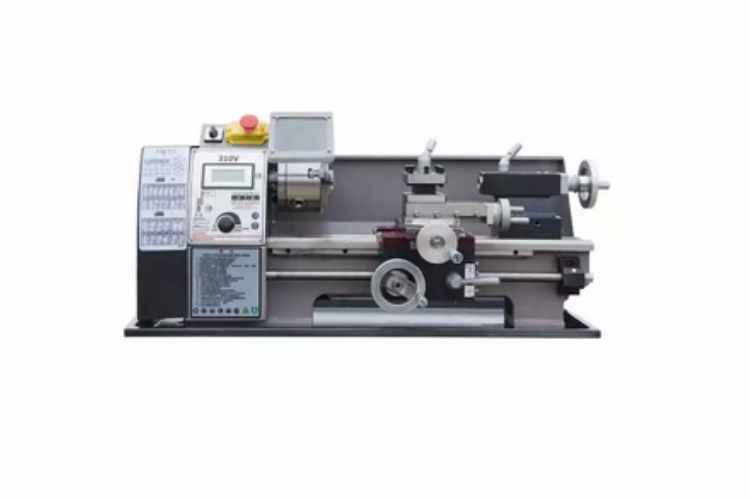The term “lathe” is often used to refer to a piece of machinery that removes metal in the form of a cylinder. The piece of work that is being cut by a fastened tool in a fixed position is turned while it is being cut. It is the very bare minimum that is expected of you. Then, as time went on, improvements were made to the functionality of manual lathes. There are several different kinds of lathes, including vertical lathes, lathes with movable turret heads, and computer numerically controlled lathes.
Simple Lathe:
A basic lathe is a piece of equipment that may be used to turn and shape a large range of materials. Lathes are used in various industries and crafts, including woodturning, metallurgy, metal spinning, spin welding, and glass working, to name a few of the more common examples. Glass may also be cut on lathes when necessary. A straightforward lathe accomplishes its goal by simultaneously rotating a work piece along an axis and sculpting it with a tool while the work piece is in motion. It results in the work piece taking on the form that was intended. The work piece is rotated on a horizontal axis on the overwhelming majority of lathes; however, the axis employed on the potter’s wheel is vertical in orientation. Horizontal lathes are the most common basic lathe machine; however, many other types and configurations are available.
Manual and CNC (computer numerical control) lathes can perform the same duties; however, CNC (computer numerical control) lathes can reach a better degree of precision. Both types of lathes are referred to as “turning machines.” Without the proper attachments, such as cutting tools and rests, lathes cannot be used to their full potential in any application. Candlestick holders, barrels for rifles or billiard cues, baseball bats, and even billiard cues are some of the numerous objects that may be fashioned with a simple lathe. Among the various choices, these are only a few of them.
Mini Lathe:
If you have been thinking about trying your hand at woodturning, the best purchase you can make is in a tiny lathe, which is also referred to as a mini-lathe in certain circles. They are, without a shadow of a doubt, among the very best instruments for twisting pens. Despite this, mini lathes are very valuable tools for many other applications. Turning items such as bowls, platters, hollow vessels, bottle stoppers, drawer knobs, chair spindles, and table legs may be done for around half the price or even for a price lower than the cost of the least costly mid-size lathe. Each part of a mini lathe may be rotated clockwise or counterclockwise.
The capacity of a tabletop lathe is deemed to be that of a mini lathe, by our definition, if it is less than 20 inches between the centers and has a swing that is less than 12 inches (the largest diameter work piece you can turn on the lathe). The motors normally found on these lathes have a rating of one-half horsepower, and the bed extensions typically found on most can be extended as needed to accommodate longer spindles. Every one of the models was evaluated by Brian Simmons, a turning specialist employed by WOOD magazine.
Conclusion:
Cutting, sanding, knurling, drilling, deformation, facing, and turning are possible uses for a lathe. Other processes that a lathe can perform include facing and facing off. Facing and facing off are two other examples of conceivable procedures. The tools are used on the metal symmetrically around the axis of the lathe while the work piece is being turned.


